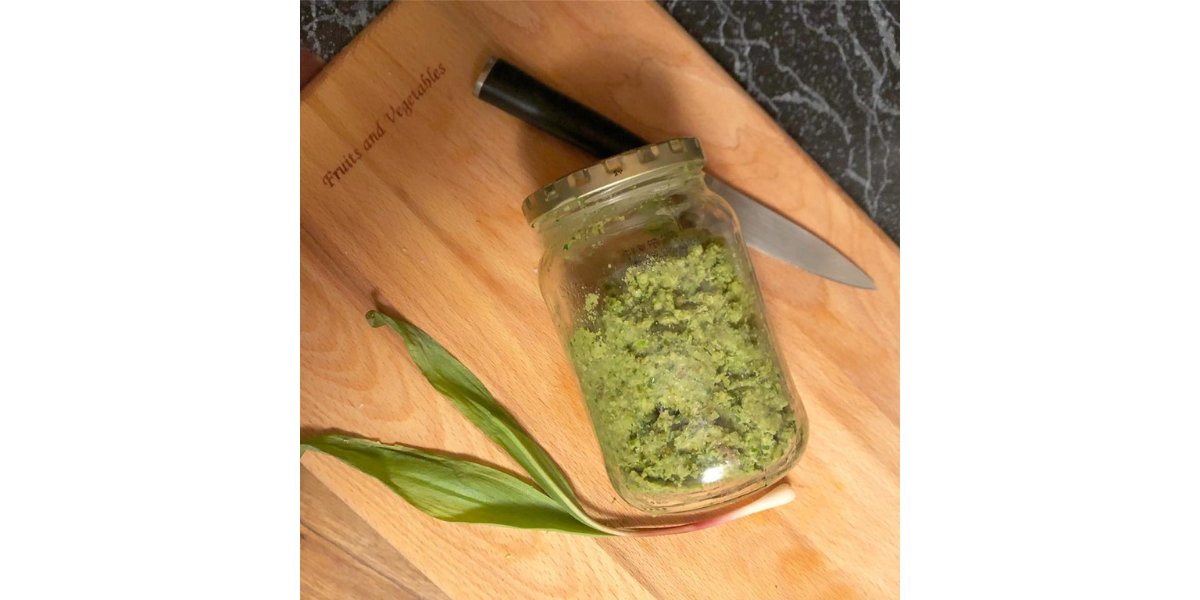By Alex Coffman
The forest gives us so much, including food. It’s no wonder they call ramps a spring tonic because nothing rings in the change of season better than sun and the peaking green of ramps. While they have had a roller coaster of popularity over the years, West Virginians have always had a food history interlinked with them. My favorite time is to combine a drive through the Monongahela National Forest with some sustainable ramp harvesting.
Coming home with a bag of ramps is always fun, but sometimes it proves hard to make it through the harvest while they are still fresh (especially when you harvest them by cutting above the root versus digging them out of the ground).
Here is a recipe that is a quick way to use lots of ramps if you are tired of fried ramps and potatoes or want to make something that will stretch their life. I absolutely love pestos for their flexibility and ease. You can put them on pastas, sandwiches, burgers, grilled cheese and more. They also keep well in the fridge so you can prolong the life of whatever herb or greens you have around.
While I had experimented with pestos before, I learned how to make “proper” pesto with my Italian friend when visiting her in Rome in 2014. They, of course, have access to the best parmesan cheese, the beautiful basil, high quality olive oil and good pine nuts. It was amazing to make pesto with a native and I try to keep that educational session in mind whenever I make pesto.
For this ramp pesto (or really any strong or wild green you may use) I suggest using walnuts over pine nuts. Pine nuts have a beautiful light flavor that will be covered by stronger flavors. Without further ado, here is my (approximated) recipe. I typically eyeball it and add more ingredients as necessary. Taste it and observe the texture as you go until it’s what you want out of a pesto.
West Virginia Ramp Pesto
Ingredients
15-20 ramps, whole, cleaned
4-5 tbsp Extra Virgin Olive Oil
1/2 tsp of salt
1/4 cup freshly grated Parmigiano-Reggiano (Parmesan) cheese
1/2 cup of whole or pieced walnuts
A squeeze of lemon juice
Directions
Blend ingredients together in a food processor until desired consistency. You may need to add additional olive oil as you go until it is a spreadable consistency. Enjoy on pasta, toasted buns of burgers, or a grilled sandwich.
Last tip: if you use it on pasta, make sure to leave a little extra pasta water in the pot for the pesto to mix with for a smoother consistency. Also, use pastas with ridges or curls to ‘grab’ the pesto.
Enjoy spring in Appalachia!
Alex Coffman is a West Virginia University Extension Agent and hobby food blogger. She is located in Grant County, West Virginia, sharing love of wild food, local things, and Appalachian dishes. Follow her blog on Instagram @the_wild_west_virginian for more recipes.

